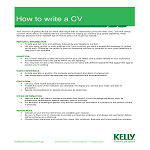Welding Trade Test: Everything You Need to Know
To qualify as a welder in South Africa, students must complete a formal trade test, which assesses both their theoretical knowledge and practical skills in welding. The trade test ensures that they meet the industry standards required for the job.
Key Components of the Trade Test:
- Theoretical Assessment: This part of the test evaluates the student’s understanding of welding techniques, materials, safety procedures, and industry regulations.
- Practical Demonstration: Students are required to demonstrate their welding skills, such as cutting, joining metals, and applying safety protocols in real-world scenarios.
Requirements to Take the Trade Test:
To be eligible for the test, students must:
- Complete Welding Training: Training should be completed at an accredited training provider, and all practical training unit standards or modules must be successfully finished. This can be verified by training records.
- Structured Workplace Learning: Candidates must complete a minimum of 12 months of workplace learning, gaining practical experience. Some centres may require students to submit a logbook that records the work they’ve completed during their training.
- Meet Entry Criteria: Each trade test centre may have specific criteria that students need to meet before applying for the test.
Trade Test Attempts:
- Three Attempts: Students are given up to three chances to pass the trade test. If they fail on the third attempt, they will be referred for Recognition of Prior Learning (RPL).
- Recognition of Prior Learning (RPL): This program addresses the gaps in the student’s knowledge and skills. Once completed, students can retake the trade test.
Certification:
Upon successfully passing the trade test, students will receive a Trade Test Certificate. This certificate is crucial for employment, as it qualifies welders to work at a professional level in their field.
Overall, completing a trade test is an essential step for those looking to establish a career in welding, as it opens up opportunities for employment and professional growt.




